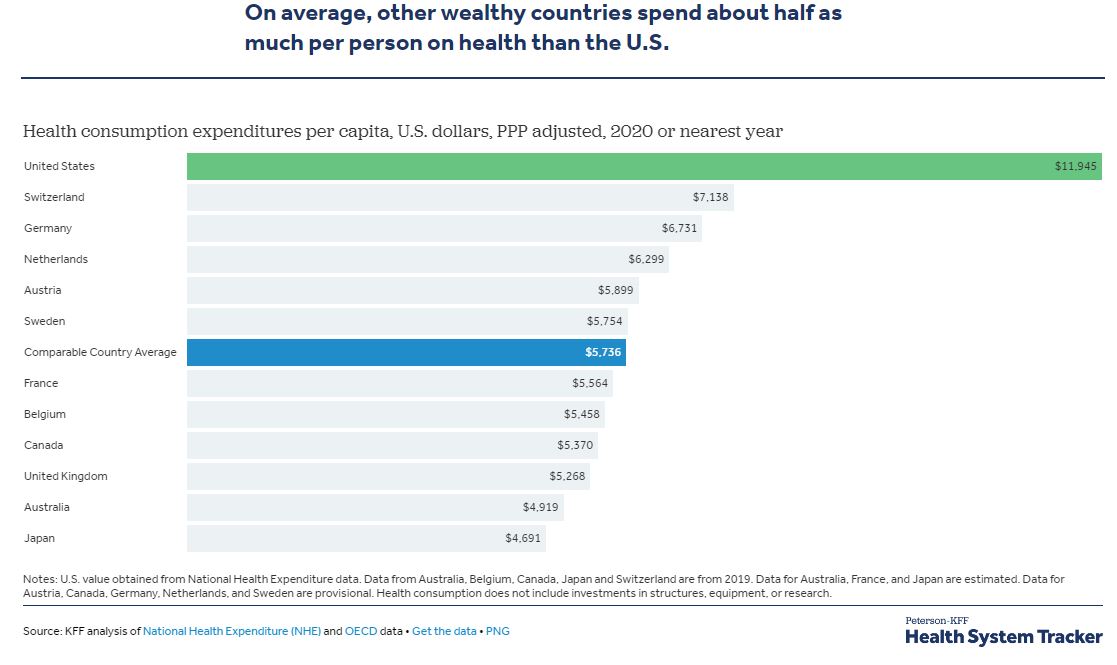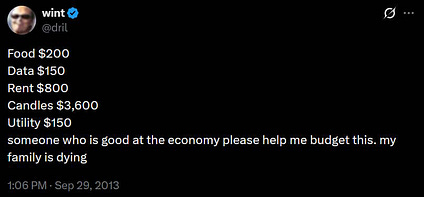Health Costs Consume a Large Portion of Income for Millions of People with Medicare – KFF

Report on Out-of-Pocket Healthcare Expenditures for U.S. Medicare Beneficiaries and Implications for Sustainable Development Goals
Executive Summary
This report analyzes the significant financial burden imposed by out-of-pocket healthcare costs on United States Medicare beneficiaries, comprised of older adults and individuals with disabilities. The analysis demonstrates that these expenditures consume a substantial portion of income, particularly from Social Security, thereby undermining progress towards key Sustainable Development Goals (SDGs). The findings highlight critical challenges to achieving SDG 1 (No Poverty), SDG 3 (Good Health and Well-being), and SDG 10 (Reduced Inequalities). High healthcare costs erode the financial security of vulnerable populations, create barriers to comprehensive medical care, and exacerbate economic disparities based on income and age.
Analysis of Healthcare Affordability in the Context of SDGs
Undermining SDG 1 (No Poverty) and SDG 10 (Reduced Inequalities)
Social protection systems like Social Security and Medicare are fundamental to preventing poverty among older adults and persons with disabilities. However, high out-of-pocket healthcare costs directly diminish the effectiveness of these systems, pushing beneficiaries closer to the poverty line and widening economic inequality.
- Income Vulnerability: A significant portion of the beneficiary population lives on low incomes, making them highly susceptible to financial shocks from healthcare costs. In 2023, one in four Medicare beneficiaries had an income below $21,000 per person.
- Erosion of Social Security: More than one-third of recipients aged 65 and older rely on Social Security for at least half of their income. With Medicare premiums and cost-sharing consuming nearly one-fourth of the average Social Security benefit, this social protection floor is substantially weakened.
- Exacerbated Inequality: The financial burden is disproportionately borne by those with the lowest incomes. On average, healthcare costs accounted for 34% of total income for beneficiaries earning $10,000 or less, compared to just 7% for those with incomes over $50,000. This disparity is a direct challenge to the objectives of SDG 10.
Barriers to Achieving SDG 3 (Good Health and Well-being)
The high cost of care presents a formidable barrier to achieving universal health coverage, a key target of SDG 3. Even with Medicare, financial constraints can prevent beneficiaries from accessing necessary health services, thereby compromising their health and well-being.
- Financial Barriers to Access: Beneficiaries face costs for premiums, cost-sharing for covered services, and services not covered by Medicare, such as dental, vision, hearing, and long-term care.
- Disproportionate Impact on the Elderly: In alignment with SDG 3’s focus on well-being at all ages, it is critical to note the heightened burden on the oldest beneficiaries. Those aged 85 and older spent 22% of their income on healthcare, compared to 9% for those aged 65-74, largely due to long-term care needs.
- Incomplete Support Systems: While programs like Medicaid and Medicare Savings Programs exist to assist low-income individuals, not all who are eligible receive these benefits. This coverage gap means many vulnerable individuals may forgo essential care, negatively impacting health outcomes.
Key Statistical Findings (2022 Data)
The data from 2022 provides a quantitative assessment of the financial burden on Medicare beneficiaries.
- On average, out-of-pocket healthcare spending ($6,330) accounted for 39% of the average per capita Social Security income ($16,157).
- When considering total income from all sources, out-of-pocket health spending represented an average of 11%. However, this figure masks significant disparities:
- One in four beneficiaries (15 million people) spent at least 21% of their total income on healthcare.
- One in ten beneficiaries (6 million people) spent 39% or more of their total income on healthcare.
- The healthcare spending burden is significantly higher for beneficiaries aged 85 and older, who spent an average of 22% of their total income on such costs, compared to 9% for those aged 65-74.
Methodological Note
The analysis of out-of-pocket spending is based on data from the Centers for Medicare & Medicaid Services (CMS) Medicare Current Beneficiary Survey (MCBS), 2022 Cost Supplement File. Income data is derived from both self-reported information in the MCBS and estimates from the Urban Institute’s Dynamic Simulation of Income Model (DYNASIM4), which is aligned with 2024 Social Security Trustees’ projections. This dual approach adjusts for the under-reporting of income and provides a comprehensive view of beneficiaries’ financial resources.
Analysis of Sustainable Development Goals in the Article
1. Which SDGs are addressed or connected to the issues highlighted in the article?
-
SDG 1: No Poverty
The article directly addresses poverty and financial vulnerability among older adults and people with disabilities. It highlights that “one in four Medicare beneficiaries had income below $21,000 per person in 2023” and that high out-of-pocket health costs “can erode the financial support provided by Social Security,” pushing vulnerable individuals closer to or deeper into poverty.
-
SDG 3: Good Health and Well-being
The core theme of the article is the affordability of healthcare, which is a key component of ensuring healthy lives. It examines the “affordability challenges posed by out-of-pocket health care costs for people with Medicare,” which can lead individuals to “forego needed care.” This directly relates to achieving universal health coverage and ensuring access to healthcare for all.
-
SDG 10: Reduced Inequalities
The article explicitly details how the burden of healthcare costs is not distributed equally. It points out that the financial strain is “higher for some Medicare beneficiaries, including those with lower incomes and those ages 85 and older.” This focus on disparities between different income and age groups connects directly to the goal of reducing inequalities within a country.
2. What specific targets under those SDGs can be identified based on the article’s content?
-
Target 1.3: Implement nationally appropriate social protection systems and measures for all, including floors, and by 2030 achieve substantial coverage of the poor and the vulnerable.
The article is an analysis of the effectiveness of key U.S. social protection systems—Medicare, Social Security, Medicaid, and the Medicare Savings Programs. It evaluates how well these systems protect vulnerable populations (older adults, people with disabilities, low-income individuals) from financial hardship due to health costs, noting that “not all low-income Medicare beneficiaries who are eligible for these benefits are receiving them.”
-
Target 3.8: Achieve universal health coverage, including financial risk protection, access to quality essential health-care services and access to safe, effective, quality and affordable essential medicines and vaccines for all.
The article’s central focus is on the lack of complete financial risk protection for Medicare beneficiaries. It documents that even with coverage, individuals face “substantial out-of-pocket health care costs.” The analysis of out-of-pocket spending as a share of income is a direct examination of the financial barriers to affordable healthcare, a key component of universal health coverage.
-
Target 10.2: By 2030, empower and promote the social, economic and political inclusion of all, irrespective of age… or economic or other status.
The article highlights the economic vulnerability of specific demographic groups, namely older adults (“ages 85 and older”) and those with low economic status (“beneficiaries with incomes of $10,000 or less”). By showing how high healthcare costs disproportionately affect these groups, it underscores challenges to their economic inclusion and security.
-
Target 10.4: Adopt policies, especially fiscal, wage and social protection policies, and progressively achieve greater equality.
The analysis revolves around social protection policies (Medicare and Social Security) and their impact on equality. The finding that “out-of-pocket health care costs accounted for a substantially larger share of per capita total income among Medicare beneficiaries with lower incomes than higher incomes” demonstrates how the outcomes of current policies result in greater inequality. The article also mentions a “recently enacted tax and spending bill” projected to “reduce household resources for individuals in the bottom of the income distribution,” directly linking fiscal policy to inequality.
3. Are there any indicators mentioned or implied in the article that can be used to measure progress towards the identified targets?
-
Proportion of income spent on out-of-pocket health costs: This is a direct measure of financial burden and risk, relevant to Target 3.8. The article provides precise data:
- “Out-of-pocket health care spending by Medicare beneficiaries accounted for 39% of Social Security income per person in 2022, on average.”
- “Medicare beneficiaries spent 11% of their total per capita income on out-of-pocket health care costs, on average.”
- “1 in 4 beneficiaries spent at least 21% and 1 in 10 beneficiaries spent 39% or more” of their total income.
- Proportion of the population living on low incomes: This indicator helps measure the scale of vulnerability, relevant to SDG 1. The article states, “one in four Medicare beneficiaries had income below $21,000 per person in 2023.”
- Proportion of income from social protection benefits: This measures reliance on social safety nets, relevant to Target 1.3. The article notes that “more than one third of Social Security recipients age 65 and older rely on Social Security for half or more their income.”
-
Disaggregated data on health spending burden by income and age: This indicator is crucial for measuring progress on SDG 10. The article provides specific comparative data:
- By Income: The spending burden is “34% among beneficiaries with incomes of $10,000 or less vs. 7% among beneficiaries with incomes greater than $50,000.”
- By Age: Beneficiaries ages 85 and older spent “22% vs. 9% among beneficiaries ages 65-74” of their income on out-of-pocket health costs.
4. Summary Table of SDGs, Targets, and Indicators
| SDGs | Targets | Indicators |
|---|---|---|
| SDG 1: No Poverty | 1.3: Implement nationally appropriate social protection systems. |
|
| SDG 3: Good Health and Well-being | 3.8: Achieve universal health coverage, including financial risk protection. |
|
| SDG 10: Reduced Inequalities |
10.2: Promote social and economic inclusion of all, irrespective of age or economic status.
10.4: Adopt social protection policies to achieve greater equality. |
|
Source: kff.org

What is Your Reaction?
 Like
0
Like
0
 Dislike
0
Dislike
0
 Love
0
Love
0
 Funny
0
Funny
0
 Angry
0
Angry
0
 Sad
0
Sad
0
 Wow
0
Wow
0



















































.jpg.webp?itok=0ZsAnae9#)
























